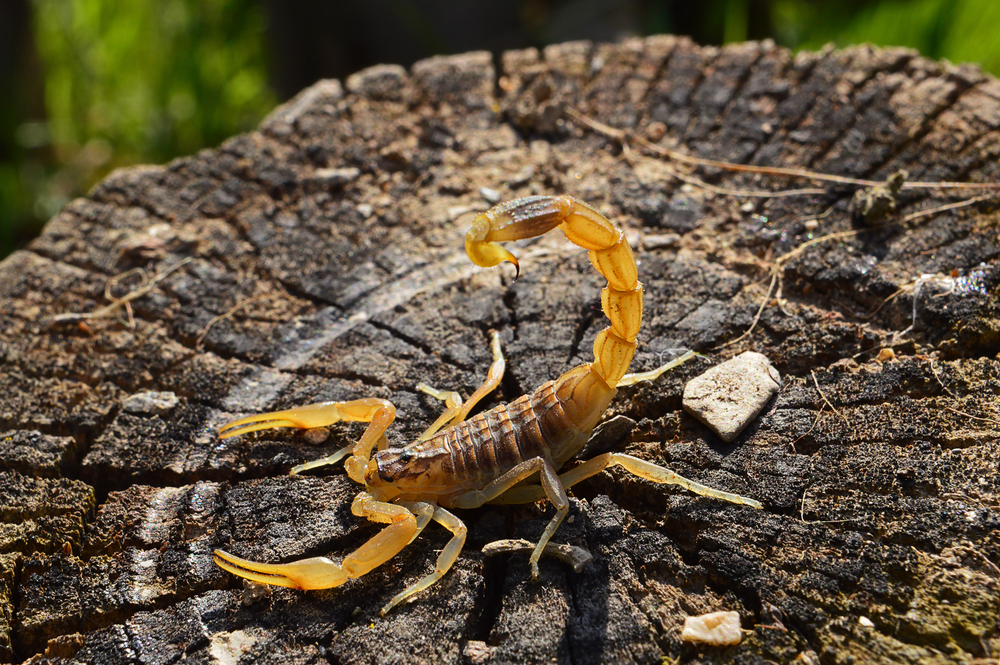Desert Hairy Scorpion Facts and Identification Guide
The desert hairy scorpion, or Hadrurus arizonensis, is the largest in North America, easily recognized by its yellow body with a dark upper side and brown hairs. This guide covers their identification, habitat, behavior, and role in the ecosystem, providing a comprehensive look at these fascinating desert dwellers.
- These scorpions thrive primarily in the Sonoran and Mojave deserts, demonstrating remarkable adaptability to both natural environments and suburban areas, where they can often be found in cool, dark places.
- Their role in the ecosystem is vital, as they help maintain population control of insects and serve as prey for larger animals, highlighting their importance in the ecological balance of desert habitats.
The Desert Hairy Scorpion
The desert hairy scorpion, scientifically known as Hadrurus arizonensis, belongs to the class Arachnid and holds the title of the largest scorpion in North America. Reaching lengths of about 14 cm (5.5 inches), these giant desert hairy scorpions are formidable creatures in the world of arachnids. Their impressive size and distinctive appearance make them a subject of fascination for many.
Identifying the desert hairy scorpion is relatively straightforward due to its unique physical traits. Typically yellow with a dark upper side, it is covered in brown hairs that enhance its ability to sense vibrations from potential prey and predators alike. Their coloration and sensory adaptations aid in both hunting and evading threats, making them masters of survival in their arid habitat.
Geographic Range
The desert hairy scorpion is primarily found in the Sonoran and Mojave desert regions, thriving in the warm, dry climates these areas offer. Their range extends into northern Mexico and includes parts of Utah and Nevada, highlighting their adaptability to various desert environments. They thrive in the extreme conditions of these regions, which significantly influence their distribution and survival.
In the United States, their presence is most notable in the western two-thirds of Arizona, and they are also prevalent in low elevation valleys and extreme southwestern Utah. Their broad geographic range underscores their resilience and ability to thrive in some of the continent’s harshest landscapes.
Habitat Preferences
Desert hairy scorpions are true desert dwellers, thriving in hot and dry conditions where they can utilize their burrowing skills for shelter and hunting. These scorpions are commonly found in various habitats, including desert and dune areas, which provide the straight sand, sandy, dry environments they prefer.
Their range includes the western two-thirds of Arizona and extends along the Gulf of California in Mexico, specifically in Sonora and Baja California Norte. Additionally, they can be found in parts of southern Nevada and extreme southwestern Utah. This range includes not only wild desert regions but also suburban areas where they adapt to human-altered landscapes in the Sonoran and Mojave deserts, including species range flanks.
In suburban settings, they often inhabit dark and moist areas such as ornamental plants, irrigated lawns, and even inside homes. They can make their homes in kitchen cabinets, crawl spaces, and attics, showcasing their ability to thrive alongside human populations.
Desert hairy scorpions demonstrate remarkable versatility in their habitat preferences, whether in the wild or suburban areas, including arizona desert hairy scorpions, desert scorpions, warm desert species, and other scorpions.
Physical Characteristics
The desert hairy scorpion is an impressive specimen, easily recognized by its distinctive physical characteristics. Typically yellow with a dark top, this scorpion is covered in brown hairs that play a crucial role in detecting vibrations from potential prey and predators. These sensory adaptations are vital for survival in the desert, where sight alone is insufficient.
At a maximum size of approximately 14 cm (5.5 inches), the giant desert hairy scorpion is a formidable predator in its ecosystem. Its body is dark, complemented by yellow legs, claws, and tail, making it a striking presence in its natural habitat. Males tend to have larger pincers, while females generally exhibit a stockier body structure, a differentiation that aids in their respective roles during hunting and mating.
Large sensory hairs on their bodies and legs enable them to detect prey through touch and air currents. Despite having numerous light-sensitive eyes, vision is not their primary method for locating prey. Their specially adapted hairs allow them to sense even the slightest vibrations, making them highly effective hunters in arid environments.
Behavior and Lifestyle
Desert hairy scorpions are predominantly nocturnal creatures, coming to life under the cover of darkness. Being nocturnal helps them avoid the extreme heat of the day and reduces encounters with natural predators. Skilled burrowers, they create shelters that offer protection and strategic points for hunting.
These scorpions are solitary and do not tolerate living in groups due to their cannibalistic tendencies. The male desert hairy scorpion attracts females with a unique courtship ritual involving sexual stings followed by a dance, a fascinating behavior that highlights the complexity of their mating process.
Their solitary and nocturnal lifestyle is key to surviving in the harsh desert environment.
Diet and Hunting Techniques
Their diet primarily consists of insects and spiders, though they occasionally target small lizards and mammals. These scorpions are ambush predators, lying in wait for unsuspecting prey to come within striking distance. Their modified pedipalps are adapted to seize prey effectively, and they may struggle to maintain their grip if the prey fights back.
Hunting primarily at night, desert hairy scorpions utilize their keen sense of touch and vibration to detect movements. Their diet mainly includes small insects, spiders, and occasionally small vertebrates, making them efficient hunters in arid habitats. Their combination of ambush tactics and sensory adaptations ensures their success as desert predators.
Reproduction and Development
Reproduction involves a complex and sometimes risky process for males. Females may resist mating or even consume the male, highlighting the dangers involved. After a gestation period averaging around 10 months, females give birth to approximately 30 young.
Newborns are white and remain on their mother’s back for a few weeks, relying on her protection until they are ready to molt and survive independently.
The young scorpions go through several molting stages before they reach maturity, a critical process for their development and eventual independence.
Venom and Toxicity
Their venom is mild, causing discomfort similar to that of a honey bee sting. While not very potent, their venom can still cause significant pain and discomfort. For most people, the sting is not dangerous unless an allergic reaction occurs. Although rare, these allergic reactions can be lethal and require immediate medical attention.
Despite their fearsome appearance, desert hairy scorpions are less dangerous to humans than many other scorpion species. Their relatively mild venom makes them less threatening in their natural habitat. Knowing their venom and potential risks is crucial for those living in areas where these scorpions are common.
Predators and Defense Mechanisms
Large lizards and owls are among the natural predators of desert hairy scorpions. These predators are adept at hunting scorpions and pose a significant threat to their survival. To defend themselves, they raise their legs and strike with their stinger.
When threatened, they may stand erect and flail their stinger to appear more intimidating. These defense mechanisms, combined with sensory adaptations, help them evade and fend off predators, ensuring their survival in the harsh desert.
Importance in Ecosystem
Desert hairy scorpions are crucial in their ecosystem as both predators and prey. They help regulate the population of their prey species, such as insects and small vertebrates, contributing to ecological balance. Their predatory behavior prevents insect populations from becoming too large, maintaining a healthy ecosystem.
Besides being predators, they are an important food source for larger animals, including lizards and owls. This dual role underscores their significance as a natural predator in the food web and the overall health of their desert habitats.
Human Interactions
Their longevity, hardiness, and minimal care requirements make desert hairy scorpions a popular choice for pet enthusiasts. Their weak venom and diverse diet make them relatively easy to care for, attracting many hobbyists.
In suburban areas, they typically inhabit cool, dry, and dark places such as kitchen cabinets, crawl spaces, and attics. Knowing their behavior and habitat preferences can help people coexist with these fascinating creatures.
Conservation Status
Desert hairy scorpions currently do not have a designated status on the IUCN Red List, indicating that they are not considered endangered or vulnerable. There is also no state or federal protection for these scorpions in the United States.
Despite the lack of a specific conservation status, monitoring their populations and habitats is important to ensure they remain stable and healthy. Conservation efforts should focus on maintaining and preventing the destruction of their natural habitats, as different species tend to thrive in well-preserved environments.
The desert hairy scorpion is a fascinating and resilient creature, perfectly adapted to the harsh conditions of the desert. From their impressive size and sensory adaptations to their crucial role in the ecosystem, these scorpions are a testament to nature’s ingenuity.
Understanding and respecting these creatures is vital for maintaining ecological balance and coexisting with them in areas where they are common. By appreciating their role in the ecosystem and taking steps to manage their populations humanely, we can ensure that desert hairy scorpions continue to thrive.
Frequently Asked Questions
Are scorpions omnivores?
Scorpions are classified as strict carnivores and primarily eat other animals, such as insects and small vertebrates. They do not consume plant matter, confirming that they are not omnivores.
Are desert hairy scorpions good pets?
Desert hairy scorpions are not ideal pets for beginners due to their potent venom and specific habitat requirements. A proper setup, including coarse sand and careful humidity management, is essential for their care.
Can you handle desert hairy scorpions?
Yes, desert hairy scorpions can be handled as they are generally not dangerous to humans, with venom that is relatively mild. However, caution should always be exercised when interacting with any scorpion species.
What happens if you get stung by a desert hairy scorpion?
If you get stung by a desert hairy scorpion, you will likely experience immediate pain, swelling, and possible numbness or tingling in the affected area. It is important to seek medical attention if symptoms worsen or do not improve.
Are desert hairy scorpions venomous?
Desert hairy scorpions possess venom; however, it is generally mild and not considered dangerous to humans. As such, they are not typically harmful despite their intimidating appearance.




